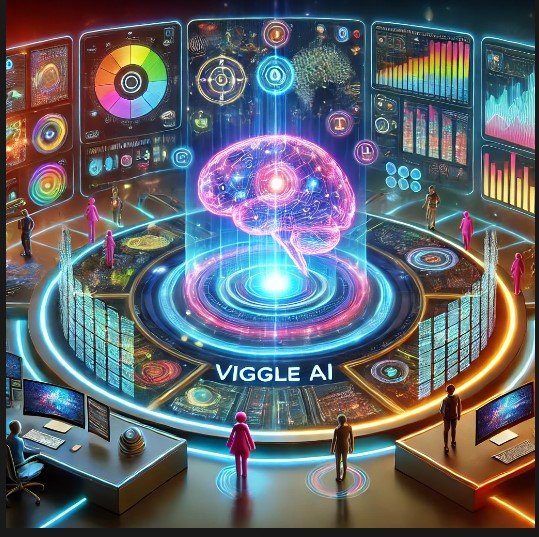Core Technologies Behind Viggle AI
Viggle AI uses a combination of advanced machine learning (ML) and artificial intelligence (AI) models that analyze vast amounts of user data in real time. These technologies are designed to predict user behavior and personalize recommendations, improving with every interaction. Here are some key components:
- Natural Language Processing (NLP): Viggle AI likely uses NLP to understand and interpret user preferences based on their interactions—whether they search, speak commands, or type queries into the platform. This enables the AI to recommend relevant media, music, or advertisements.
- Collaborative Filtering: Viggle AI employs collaborative filtering, which uses the behavior of similar users to predict what you might like. This form of algorithm clusters people with similar tastes and then recommends new content based on the preferences of the group.
- Deep Learning & Neural Networks: Deep learning models, possibly trained on millions of user interactions, give Viggle AI the power to make more sophisticated predictions. Neural networks can learn from patterns in large datasets, continuously improving as they gather more information about user habits and tastes.
2. Enhanced Personalization: Entertainment Tailored to You
Viggle AI is not just about basic content recommendations; it’s about creating a deeply personalized experience for each user. Viggle AI thrives on the concept of “knowing the user” better than they know themselves. Here’s how it achieves that:
- Contextual Awareness: Viggle AI analyzes not just what content you consume, but when and where you consume it. For instance, it might suggest upbeat music in the morning or a relaxing show in the evening based on your daily habits.
- Emotion and Sentiment Analysis: Through advanced emotion-recognition algorithms, Viggle AI could gauge user sentiment based on interactions and feedback, providing content that matches the user’s emotional state.
- Real-time Recommendations: Rather than static recommendations, Viggle AI provides real-time suggestions, adjusting dynamically as you engage with different content or platforms.
3. Gamification and User Engagement
Viggle AI takes user engagement to the next level through gamification. The platform can incorporate interactive features such as trivia, polls, or quizzes, making media consumption not only passive but also participatory. Here’s how it amplifies user engagement:
- Interactive Experiences: While watching a TV show, users could be prompted with questions or challenges that earn them rewards, encouraging them to pay closer attention and engage with content beyond just watching.
- Reward Systems: Viggle AI uses a points-based system where users are incentivized for consuming content. These rewards might include redeemable items, unlocking special features, or even exclusive content.
4. Data-Driven Analytics: A Game-Changer for Businesses
From a business perspective, Viggle AI presents a treasure trove of data. Media companies, advertisers, and content creators can leverage these insights to shape their strategies. Here are some business applications of Viggle AI:
- Content Optimization: By analyzing which content garners the most engagement, Viggle AI can help media companies determine what to produce more of, whether it’s genres, specific actors, or themes.
- Ad Targeting: Viggle AI’s predictive analytics allow advertisers to place hyper-targeted ads that are more relevant to users, leading to better conversions and more meaningful ad experiences.
- Consumer Behavior Prediction: Viggle AI can predict trends in consumer behavior, helping businesses adapt their strategies for future content or product launches based on real-time insights.
5. Ethics: Harmonizing AI Power with Privacy
As powerful as Viggle AI is, it also brings ethical challenges, particularly around privacy and data use. While personalization enhances user experience, it’s critical to maintain transparency and control over how much data is being collected. Some considerations:
- Data Privacy: Viggle AI needs to ensure compliance with data protection laws such as GDPR and CCPA, ensuring that user data is anonymized, secure, and only used with consent.
- Algorithmic Bias: AI can sometimes replicate biases present in the data it’s trained on. It’s important to ensure that Viggle AI’s algorithms are designed to avoid amplifying cultural, racial, or gender biases in its recommendations.
- User Control: Users should have the ability to opt out or modify their personalization preferences to maintain a sense of control over their digital experiences.
6. The Future of Viggle AI
Looking ahead, Viggle AI could be at the forefront of immersive entertainment. With technologies like augmented reality (AR) and virtual reality (VR) gaining ground, Viggle AI could power new forms of interaction where users not only watch but actively participate in stories or games.
- Interactive Storytelling: AI-powered branching narratives could let users shape how a movie or show unfolds, choosing different paths or outcomes based on their preferences and previous interactions.
- AI in Gaming: Viggle AI could also expand into gaming, where it analyzes gameplay behavior and suggests challenges or rewards that are tailored to the player’s skill level and style.
Conclusion: Viggle AI’s Role in Shaping the Future of Entertainment
Viggle AI is at the crossroads of technology and entertainment, pushing boundaries by transforming how users discover and engage with content. Through advanced machine learning, deep personalization, and seamless user interaction, it offers a future where content is catered directly to individual needs.
The challenge, however, lies in finding the right balance between offering engaging, tailored experiences while respecting user privacy and autonomy. As the technology evolves, Viggle AI will likely continue to pioneer new avenues in personalized entertainment.
4o


